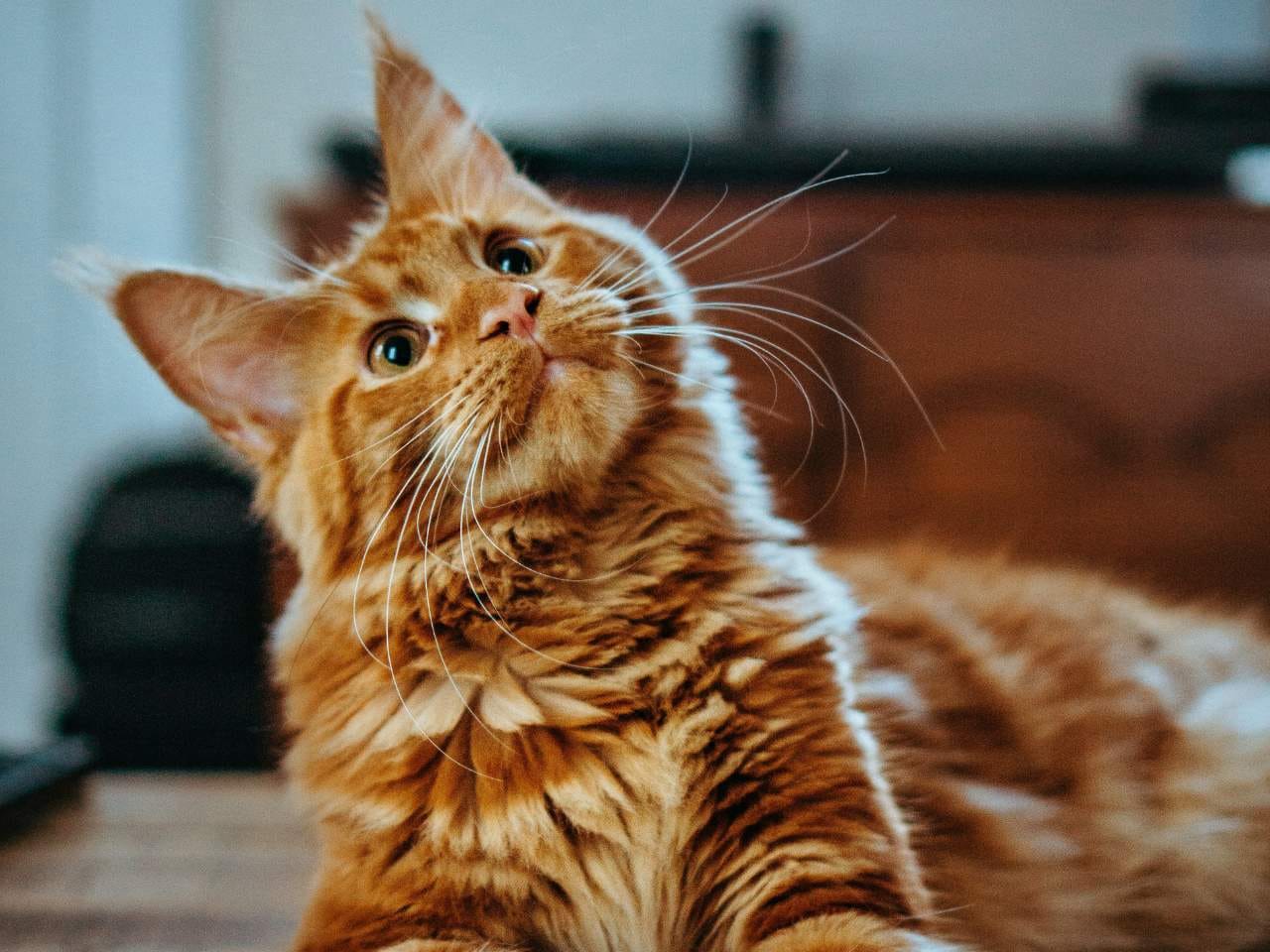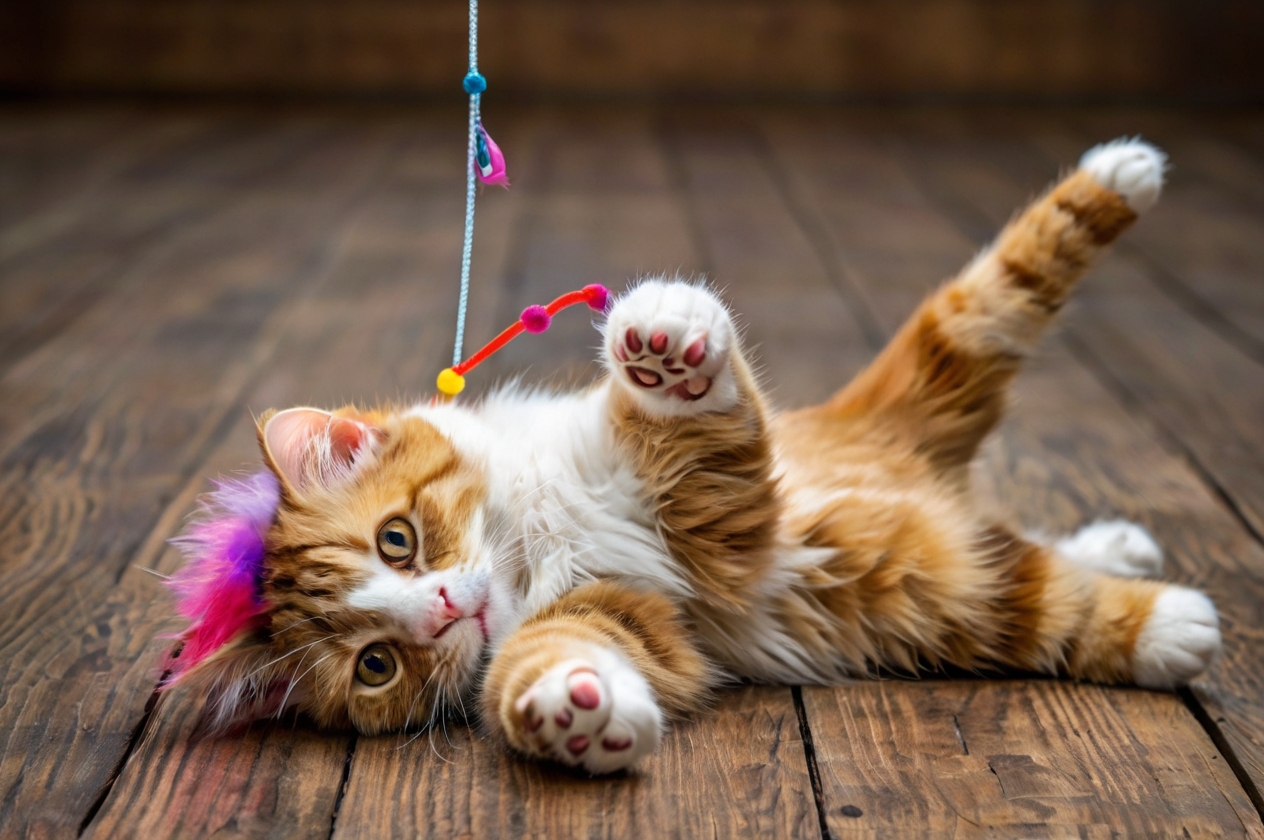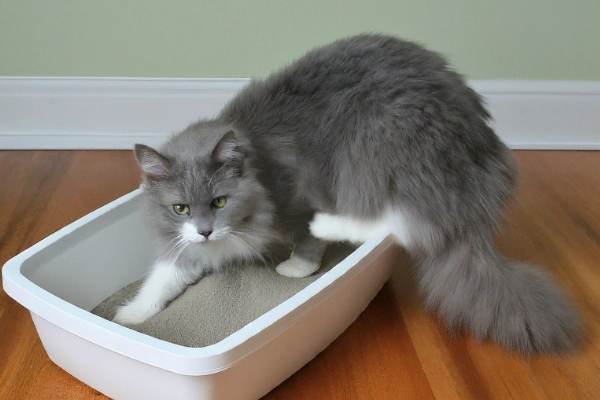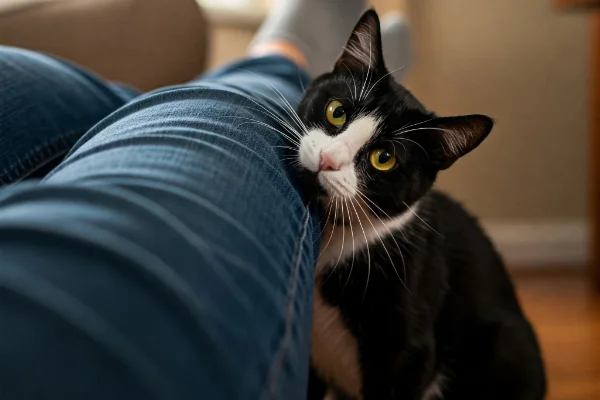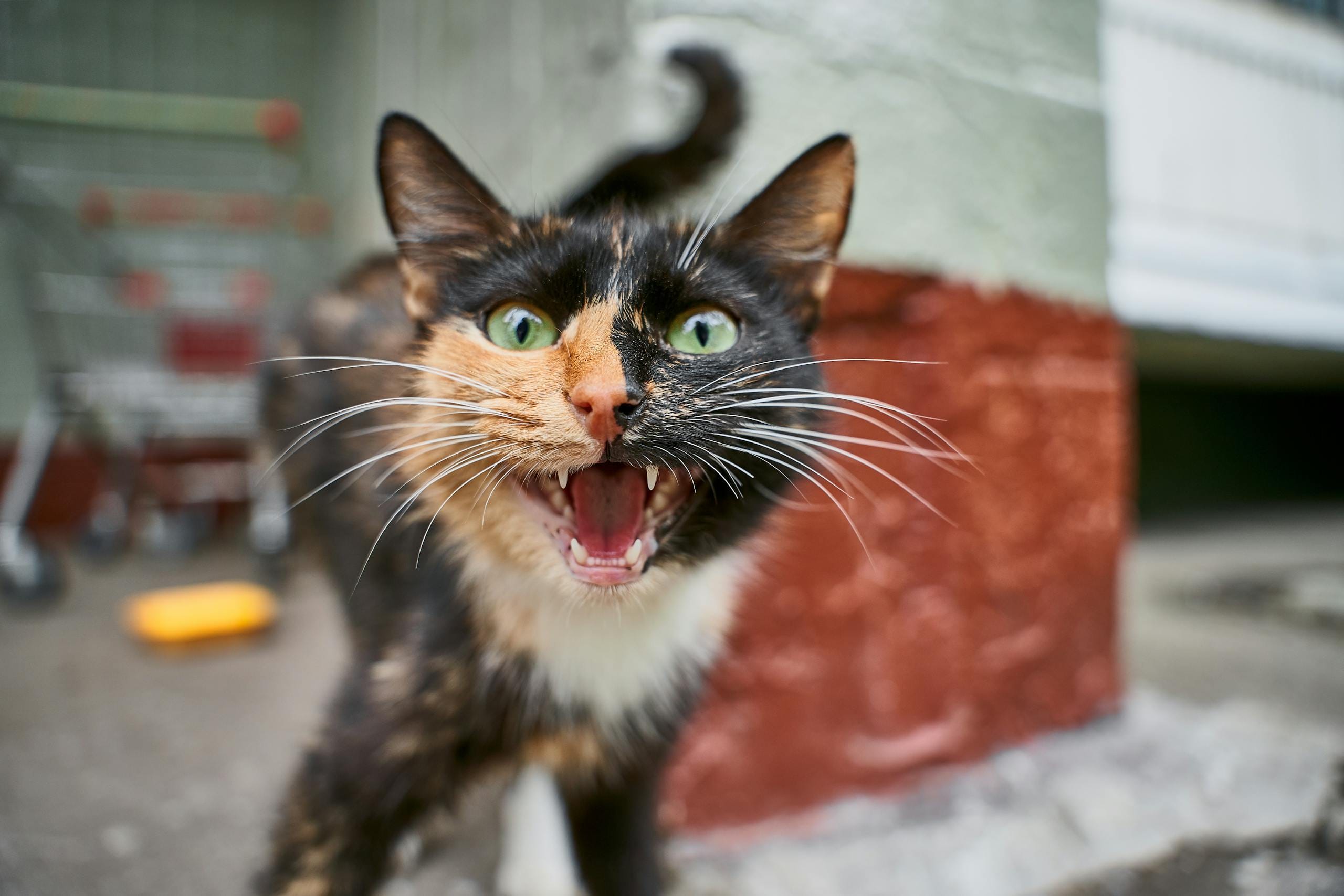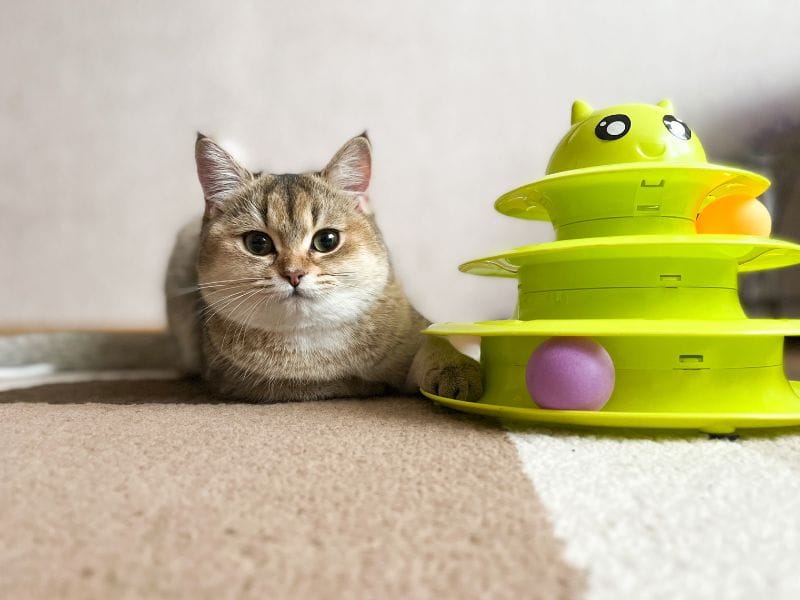Have you ever caught your cat staring intently at a blank wall or suddenly racing around the house like a tiny tornado? While these behaviors known as cat body language might seem puzzling. Cats are master communicators using an intricate language of gestures, postures, and expressions.
Cat body language is their primary way of expressing everything from contentment to distress, yet many cat parents miss these crucial signals. In this guide, we’ll decode 10 common signs your feline friend displays, from the subtle tail twitches and ear positions to more obvious behaviors like kneading and hissing, helping you better understand what your cat is trying to tell you.
1. Tail Position
Your cat’s tail is like a mood meter, constantly signaling their emotional state. When you see their tail held high with a slight curl at the tip, it’s a clear sign of a happy, confident cat who’s pleased to see you – think of it as their version of a warm greeting.

A twitching tail, however, can mean two things: either they’re excited about something (like spotting a bird) or feeling frustrated. If you notice their tail held low and tucked close to their body, your cat is likely feeling fearful or submissive, and it’s best to give them space until they feel more secure.
Lastly, when your cat’s tail puffs up and stands on end, this is a clear indication that they are frightened or feeling threatened, almost like a furry defense mechanism. Understanding these cat’s body language not only helps you bond with your feline friend but also allows you to respond appropriately to their needs and emotions.
2. Ear Position
Your cat’s ears are incredibly expressive and serve as one of the most reliable cat’s body language of their emotional state. When their ears point forward, they’re alert and engaged, showing interest in something that caught their attention—perhaps a bird outside the window or your conversation.

However, flattened ears pressed tightly against their head signal either fear or aggressive intentions, warning you to give them space. If you notice their ears rotating backward while remaining upright, your feline friend is likely annoyed or irritated with something in their environment, and it’s best to identify and address the source of their discomfort.
3. Cat Body Language: Eye Contact
When it comes to feline communication, eyes speak volumes. If your cat gives you slow, deliberate blinks, often called “cat kisses,” they’re expressing affection and deep trust.

This gentle gesture is their way of saying “I love you” and feeling secure in your presence. However, be wary of unblinking, direct stares – especially when accompanied by dilated pupils. This cat’s body language often signals aggression or territorial behavior, and it’s best to give your cat space when they display this look.
4. Vocalizations
Vocalizations are among the most direct ways cats communicate with their human companions. While purring is often associated with contentment, particularly during petting sessions or peaceful moments, cats may also purr when they’re seeking attention or even when they’re in pain – it’s their way of self-soothing.
Hissing, on the other hand, is a clear warning signal that your cat feels threatened or aggressive; it’s best to give them space when you hear this sound. Meowing is perhaps the most versatile vocalization, as cats have developed different types of meows specifically for human interaction.
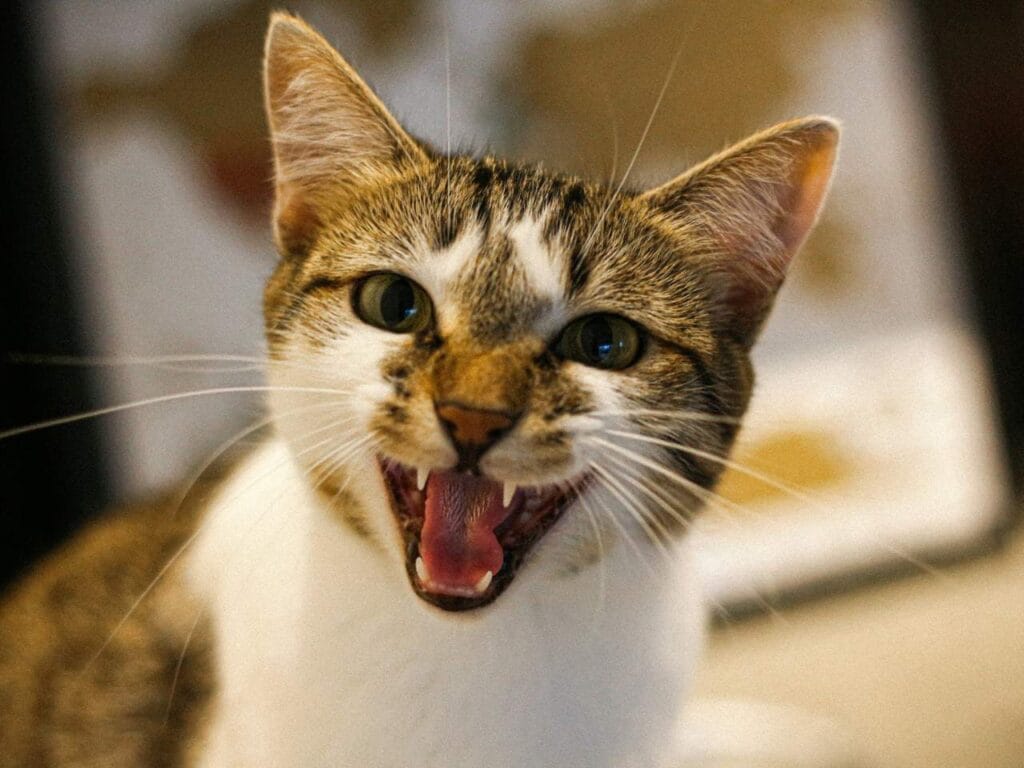
A short meow might be a simple greeting, while repeated or prolonged meows could indicate hunger, discomfort, or a desire for attention. Interestingly, adult cats rarely meow at each other, making this form of communication uniquely reserved for their human relationships.
5. Body Postures
A relaxed cat displays a comfortable and content posture, with their body appearing loose and at ease. Their tail might be held in a gentle curve or wrapped around their body, while their ears remain in a neutral, forward position. When lying down, they may stretch out completely or curl up in a loose ball, this kind of cat body language usually indicates they feel safe and secure in their environment.
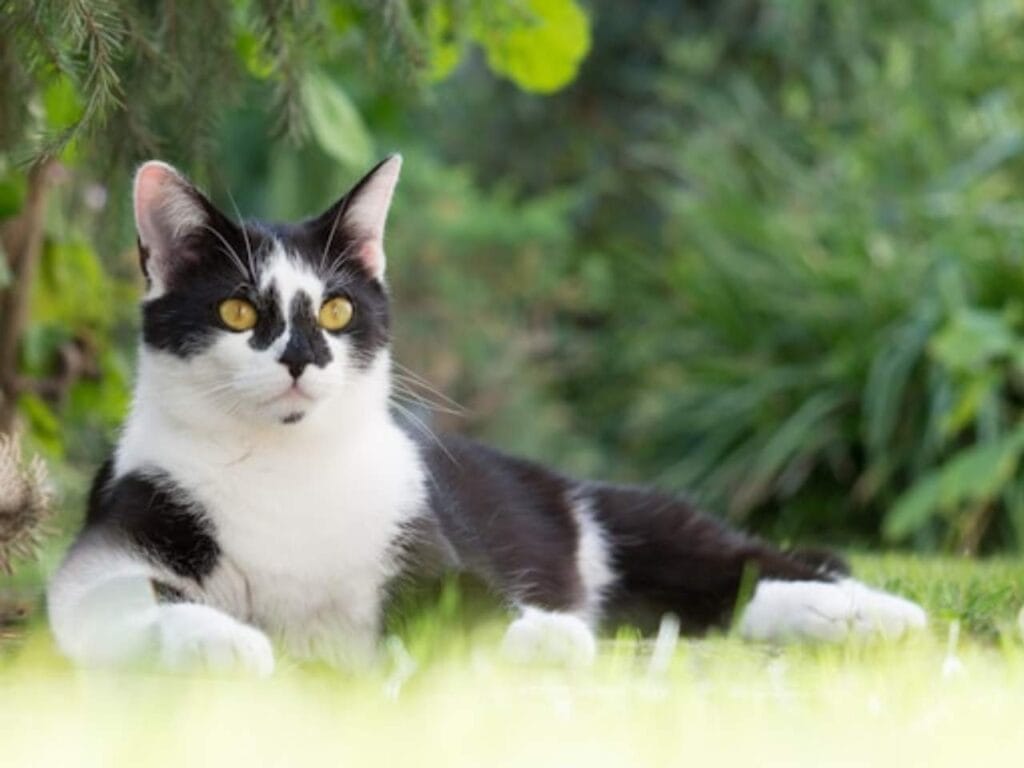
When cats feel threatened or anxious, their bodies become noticeably tense and rigid. They may lower their head and flatten their body close to the ground, with their muscles visibly tightened. Their tail might be held low or tucked underneath their body, and their ears may flatten against their head. These signs indicate your cat is experiencing fear or preparing for potential aggression.

The classic “Halloween cat” pose, with an arched back and raised fur (piloerection), is a clear defensive signal. This cat body language makes the cat appear larger and more intimidating to potential threats. Often accompanied by a sideways stance and a bushed-out tail, this position can indicate either defensive behavior or that your cat is preparing to attack if they feel cornered or threatened.
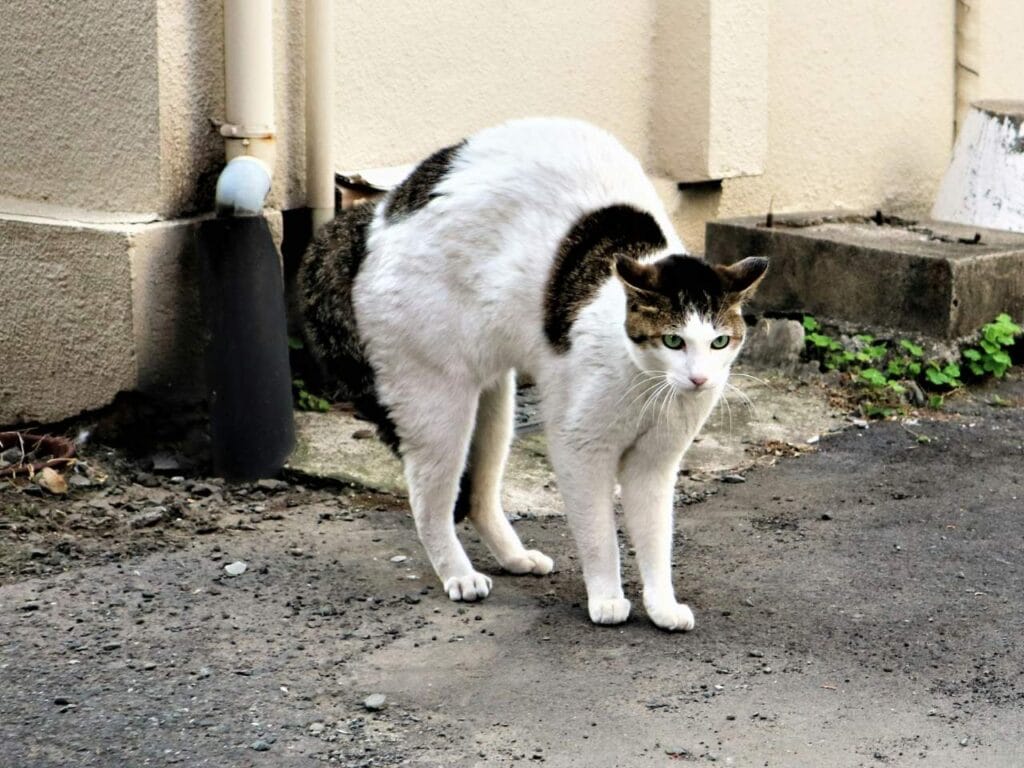
6. Paw Movement
Cats often communicate their emotions through subtle movements, particularly with their paws. When you observe slow pawing, it’s usually a sign that your feline friend is seeking attention or expressing contentment.
This behavior mimics kneading, which is common when cats feel relaxed and safe. If your cat gently paws at you or a soft surface, it’s a signal that they are looking for comfort, affection, or even a cozy lap to curl up on.

In contrast, fast pawing can indicate frustration or anxiety. If your cat is rapidly tapping their paws against a surface, it may feel stressed or overwhelmed, perhaps due to changes in their environment or routine.
Cat body language like this is often a cry for help or a way to express restlessness. Recognizing this behavior can be crucial in providing your cat with reassurance and a more calming atmosphere to reduce their anxiety.
7. Grooming Behavior
While cats are naturally meticulous groomers, changes in their grooming habits can signal important messages about their well-being. Excessive grooming, characterized by constant licking that may lead to bald patches or skin irritation, often indicates stress or anxiety triggered by environmental changes, new pets, or disrupted routines.
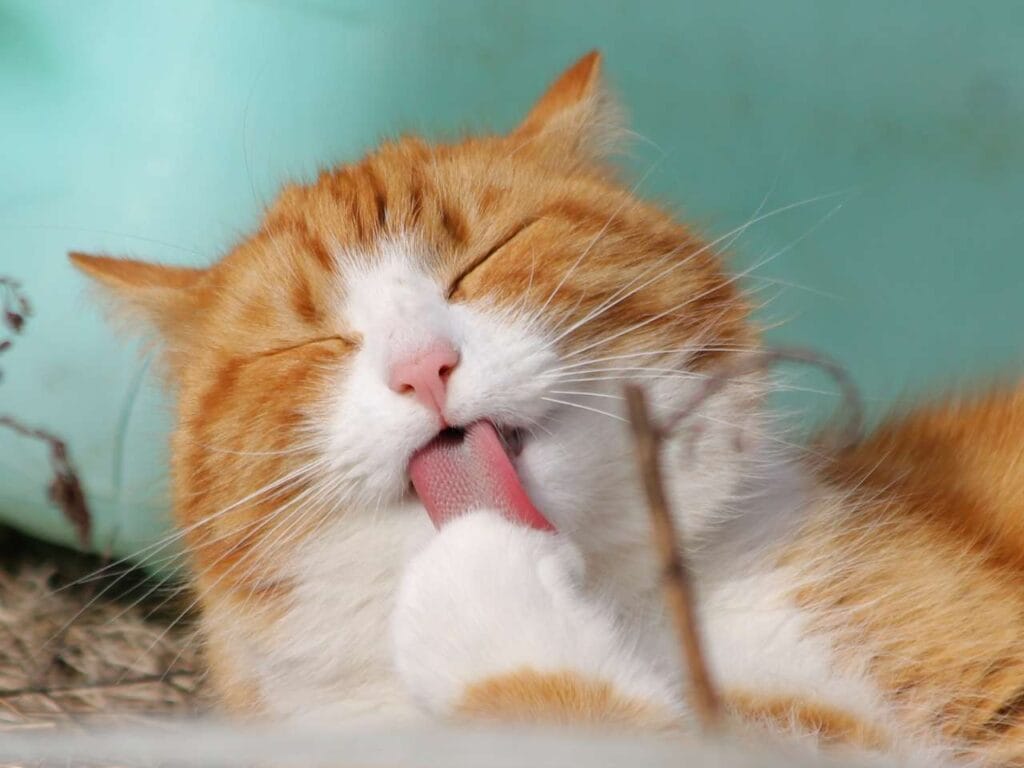
Conversely, if your typically well-groomed cat suddenly appears unkempt or stops grooming altogether, it could be a red flag for illness, depression, or physical discomfort. Regular observation of your cat’s grooming patterns can help you identify these behavioral changes early and seek appropriate veterinary care when needed.
8. Playful Behavior
When your cat displays pouncing, chasing, or batting behaviors, they’re expressing their natural hunting instincts and playful energy. These actions often indicate your feline friend is in a positive, excited mood and ready for interaction.
Watch for a sideways hop, wiggling hindquarters before pouncing, or quick swats at toys – these are all healthy signs that your cat is feeling energetic and seeking engagement through play. So it’s important to provide cat friendly home for your cat. If you want to know more about creating safe space for them please check our article here
9. Eating Habits

Cat body language is one of the crucial indicators of their well-being. One of them is significant changes in your cat’s eating habits. If your normally voracious feline suddenly loses interest in food or a usually picky eater starts devouring everything in sight, it might signal underlying health issues or emotional stress. Watch for behaviors like pushing food around without eating, excessive meowing at mealtime, or leaving food untouched for extended periods. If you want to learn more about cat’s eating habits, you can read here cat eating habits by untamed
10. Litter Box Behavior
When it comes to understanding your feline friend, their litter box behavior can speak volumes about their well-being. Changes in your cat’s bathroom habits are often significant indicators that something isn’t quite right.
If your normally meticulous cat. suddenly starts eliminating outside the litter box, missing the box entirely, or spending unusually long periods inside it, they’re trying to communicate something important. These changes could signal various issues, from medical conditions like urinary tract infections or kidney problems to emotional distress caused by environmental changes or anxiety.
Sometimes, territorial disputes with other pets might lead to litter box avoidance, especially in multi-cat households. Watch for signs like frequent trips to the box with little output, crying while using the box, or completely avoiding it altogether.
Your cat might also express their displeasure with a dirty litter box or signal their disapproval of a recent change in litter type through these behaviors. If you notice this cat’s body language, it’s essential to consult with your veterinarian to rule out medical issues before addressing potential behavioral causes.
Tips for Improving Your Cat’s Communication Skill
Understanding your cat’s body language is essential for building a strong bond and ensuring their well-being. By dedicating quality time to interactive play sessions and gentle grooming, you create opportunities to better understand your feline friend’s preferences and communication style.
Regular observation of your cat’s behavior, including subtle changes in their routine or body postures, can help you identify their needs and emotions more effectively. Creating a calm and stress-free environment is crucial for clear communication with your cat.
Provide quiet spaces where they can retreat when overwhelmed, and maintain a consistent daily routine to help them feel secure. Multiple elevated perches and hiding spots allow them to observe their surroundings comfortably while expressing their natural behaviors.
If you notice sudden changes in your cat’s communication patterns or unusual body language, it’s important to consult a veterinarian to rule out any potential health issues that might be affecting their behavior. Remember, cats communicate through various channels, and understanding these signals helps strengthen your relationship while ensuring their physical and emotional needs are met.

